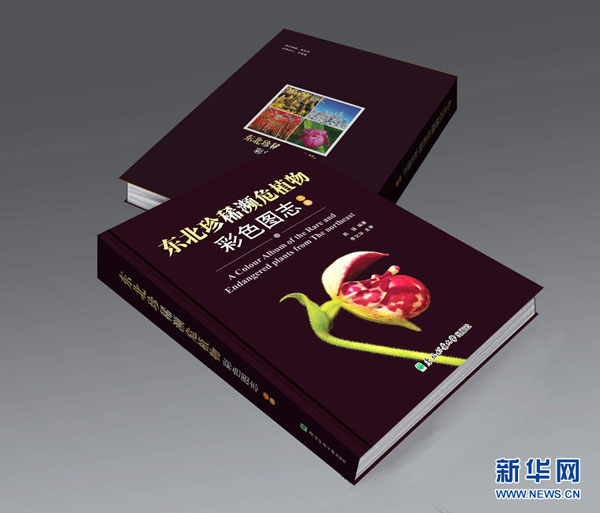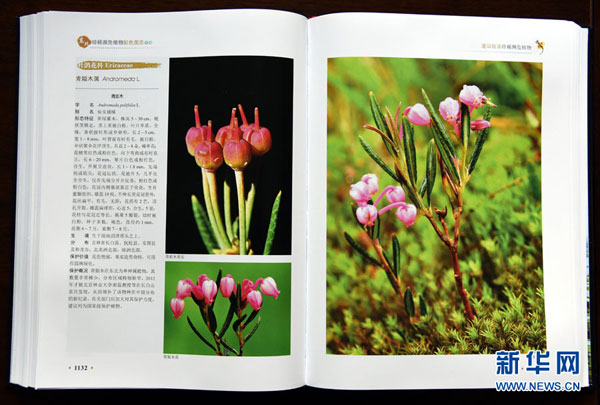The most authoritative catalogue of rare and endangered plants from Northeast China, written by a Chinese national-leading expert, was published by Northeast Forestry University Publishing recently.
A Color Album of the Rare and Endangered Plants from the Northeast, by Zhou Yao, a biology professor from Tonghua Normal University, documents some 636 rare plants found in the forests of Northeast China.
The book fills a huge gap in the record of flora in the temperate forest ecosystem of the northeast.
 |
|
The first book about the endangered plants of Northeast China is published by Northeast Forestry University Publishing. [Photo/Xinhua] |
Previous information and details of the plants have been accompanied only by hand drawn pictures; however this book contains 3,374 photographs taken by Zhou himself.
Zhou has dedicated 35 years of his life to researching rare and endangered species of plants.
In each of those years he has spent a minimum of 170 days tracking and researching plants across Changbai Mountain in Northeast China's Jilin province.
At his own expense, Zhou has traversed large woods, climbed steep cliffs and trudged through swamps in order to get first-hand information.
 |
|
The book provides accurate information on each rare and endangered species in Changbai Mountain, accompanied by color photos. [Photo/Xinhua] |
"The book fills the void in the inadequacy of information on endangered plants in the Northeast," said Zhou. "Now it will be much easier to identify plants."
China's northeastern temperate forests are some of the most well-preserved on the Eurasian Continent. This is thanks to the Lesser Khingan Mountains and Greater Khingan Mountains in Jilin and Heilongjiang province providing a natural defense for the endangered plants.
Over the past 35 years, Zhou has captured more than 220,000 images of plants in the region, and in the process has set up Changbai Mountain's largest image library.
Wang Caiwen, academician of Chinese Academy of Sciences, and the chief copy editor of the book, said Zhou's book is "comprehensive, systematic, accurate and informative".
Wang went on to say that the book represents a breakthrough in endangered and rare plants in Northeast China, and could be used as references for ecological protection in the region and northeastern Asia.
